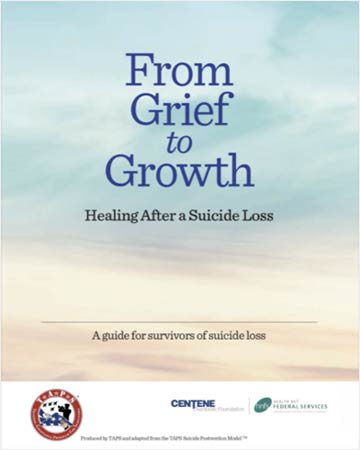Healing After a Suicide Loss
Author: Carla Stumpf Patton
Editor's Note: This excerpt is from pages 29 - 31 of From Grief to Growth: Healing After a Suicide Loss
For those who are grieving a loved one who died by suicide, TAPS is here to support you. The grief one experiences after a suicide can differ from other kinds of loss, with many challenging factors. The intense sorrow and pain can feel overwhelming, and the mixed emotions can be conflicting and confusing.
To help, we created the valuable resource, From Grief to Growth: Healing After a Suicide Loss. Written by us as both subject matter experts and survivors — for survivors, this roadmap can guide your journey on a pathway toward healing.
The guidebook focuses primarily on the first phase of the TAPS Suicide Postvention ModelTM , which is the stabilization necessary after a suicide loss.
This includes addressing mental well-being, dealing with trauma, and coping with suicide specific issues (such as complex emotions, the question of “Why?”, talking to children about suicide, and navigating family dynamics). As heartrending, stressful, and isolating as your grief may be, please know:
- You are not alone.
- You can survive this.
- Your feelings are valid and OK (as long as it is not harmful to yourself or others).
- TAPS is here to walk beside you.
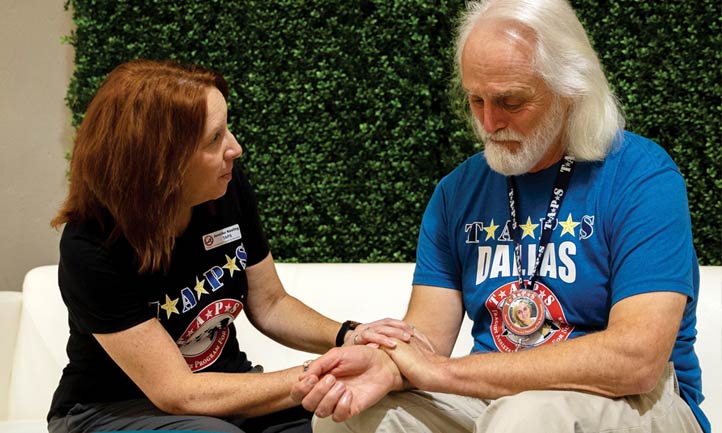
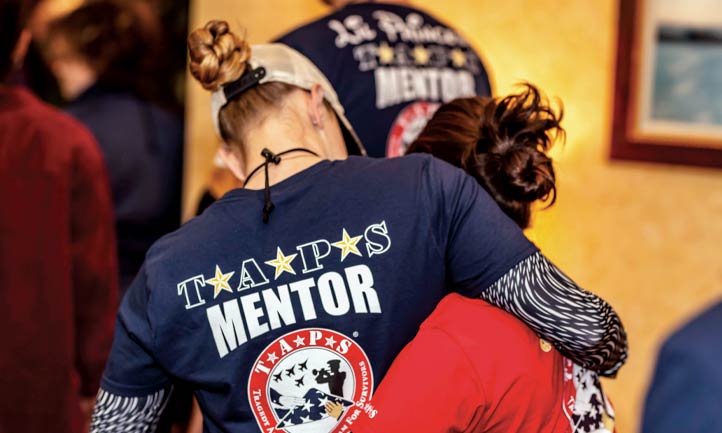
For an inside look at some of the topics covered in the guidebook, we offer you the following excerpts to consider:
Family Dynamics
Challenges or discord within a family are not unusual after a death by suicide. Military culture and lifestyle may complicate this because of the limited time that extended family members have spent together. They may not have had time to build relationships, establish trust, or develop ways of communicating and solving problems.
As the family struggles to understand how the suicide could have happened, it is easy to blame one another or unintentionally hurt each other’s feelings. Intense feelings or misunderstandings about why suicide occurs can hamper effective discussions and problem solving. It is important for families to stay connected and find ways to communicate effectively with each other. Here are some observations about the nature of grief that might help you and your family work together in the aftermath of suicide:
- Grief will likely unfold differently for each person.
Even though family members care deeply about one another, individuals commonly deal with emotional pain in ways that are all their own. One person may want to return to work within a day or two after the funeral, while another believes doing so is disrespectful to the deceased. One person may be greatly comforted by their faith, religious background, belief in God, and an afterlife, while another may question their faith because of the stigma associated with suicide.
- Profound grief can be expressed outwardly or inwardly.
One person may experience grief just as deeply as another, even if one of them shows their feelings while the other is silent. One person may repeatedly look through photos and reminisce, while another is anxious about doing so or even resists sharing memories of the deceased. One person may feel that attending a support group is beneficial, while another doesn’t see how a support group could be helpful and prefers not to attend.
- Everyone in the family is often hurting at the same time and may also be emotionally vulnerable.
One person may need physical affection and closeness, but the other cannot readily provide it. One person may want to talk about their daily struggles with grief, but the other may be unable to tolerate conversations about the pain of loss. It is important to remember that every grief journey is different. There is no right or wrong way to grieve. Encourage family members to share how they are feeling and ask directly for what they need.
- It is common for family members to be angry or to blame others following a suicide.
Suicide is complicated, and can have many contributing factors. Very often, especially in military families, extended family members may not be aware of what others are experiencing because they live in separate states. Each member has their perspective on what happened to their loved one. This can lead to misunderstandings and directing blame at one another. If family discord is a challenge for you, it might be useful to bring in a third party, such as a faith leader, counselor, or family therapist. Open and effective communication can reduce relationship conflicts and/or challenges. TAPS can connect you with a professional counselor or locate resources in your local community.
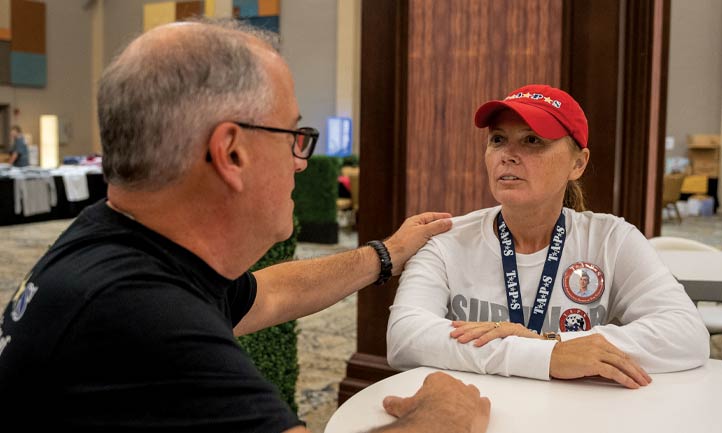
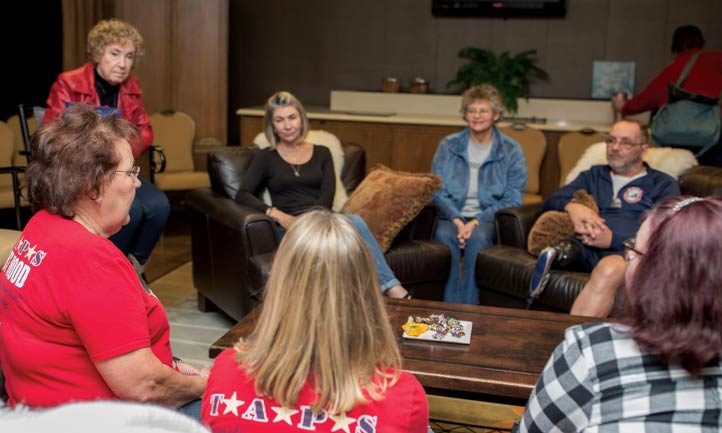
Suicide Postvention
The TAPS Suicide Postvention ModelTM is designed to help suicide loss survivors find healing, growth, and purpose in their lives. TAPS survivors have shared that this enabled them to discover new possibilities for their own future — achieving posttraumatic growth and the inspiration to help others — such as becoming a TAPS Peer Mentor. Many survivors come to realize that they are more resilient than they once thought, and have gained a greater appreciation for the little things in life. No matter where you are in your grief journey, TAPS is here to connect you with programs and services to support your healing and growth.
- Suicide Loss Support
- TAPS Services (Casework, Education Assistance, or Community Care for counseling connections)
- Additional Resources (resources from our TAPS Partners)
Dr. Carla Stumpf Patton, Senior Director, TAPS Suicide Prevention and Postvention and Surviving Spouse of U.S. Marine Corps Drill Instructor Sgt. Rich Stump

